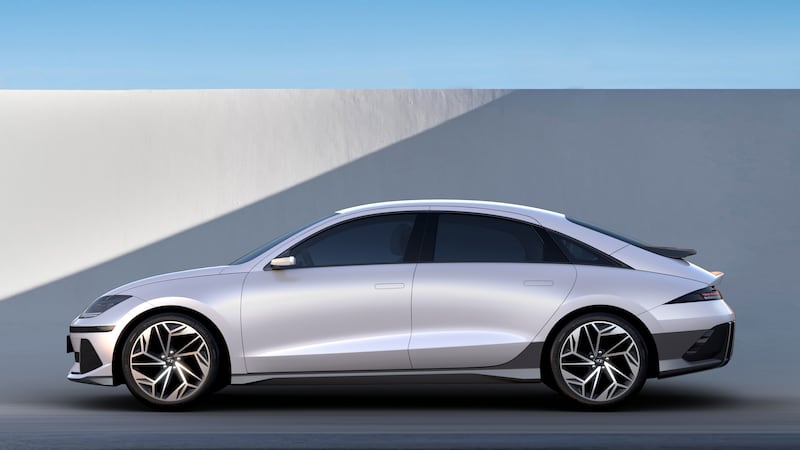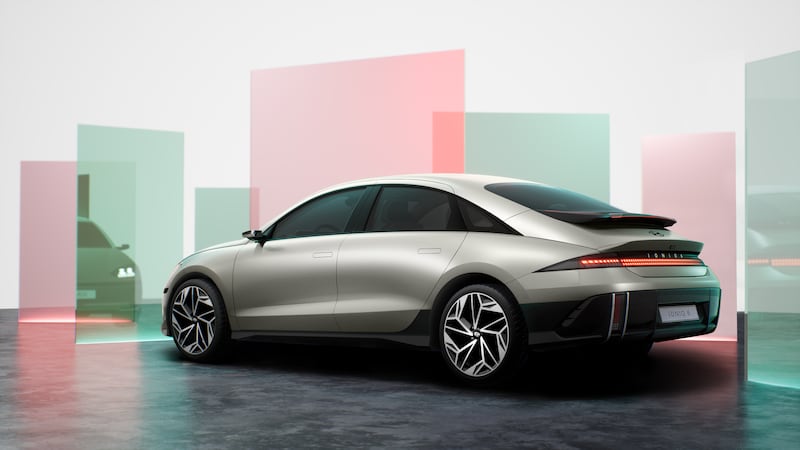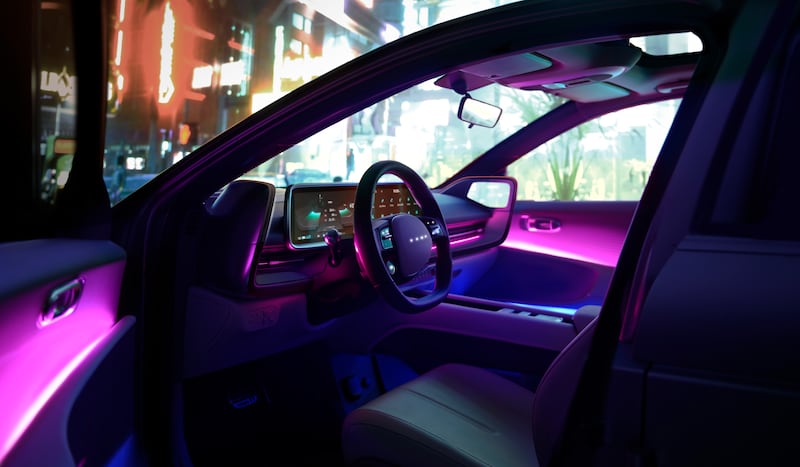Are you missing Saab? Since the demise of the Swedish car maker in 2011, many have lamented its passing, but Hyundai seems intent on bringing back some of that Scandinavian style with this, the new Ioniq 6.
The Korean giant’s follow-up to the massively successful Ioniq 5 electric car, the Ioniq 6 is a low-slung, streamlined four-door saloon that has more than a little of the original ‘Ur-Saab’ 92001 prototype of 1946.
Indeed, Hyundai seems keen to make the link between the Ioniq 6′s streamliner styling and the art-deco look of the 1930s and 1940s, even photographing its dramatic new electric model with a propellor-driven Douglas airliner from the 1940s.
The styling does have some modern touches, of course. The wing mirrors can be optionally replaced by slim, wind-cheating cameras, while the brake light bar that runs the full width of the boot uses the same cube-like ‘Parametric Pixel’ design as the Ioniq 5.
READ MORE

That teardrop shape, in spite of being 150mm taller than the Hyundai Prophecy concept that inspired the Ioniq 6′s styling (mostly to make space for the chunky battery back), is very aerodynamically efficient, with a drag coefficient of 0.21Cd — comparable to that of the Mercedes EQE.
There is a ducktail-style boot spoiler and some clever aero tweaks around the rear bumper to ensure that the wing-like profile of the car remains stable and secure at higher speeds. The Ioniq 6 is quite a long car — 4.8-metres overall — but it’s roughly sized to compete with the Tesla Model 3 and Polestar 2, and should be priced accordingly.

That slippery shape should bring with it range benefits. Hyundai — which was stung into revealing the 6 early thanks to leaked images on the internet — isn’t giving away any technical details yet. However, we do know that it uses the same E-GMP platform as the bulkier Ioniq 5.
With the largest 77kWh battery, the Ioniq 5 has a claimed one-charge range of 508km, so it’s very likely that with its superior aerodynamics, the Ioniq 6 will do better, maybe as much as 600km. Earlier this week, Volkswagen showed off its similarly-sized ID.Aero concept electric saloon, which has a claimed range of 620km using the same 77kWh battery as the taller, 500km-ranged, ID.4 SUV.
Whatever the range, the Ioniq 6 will be fast-charging as it will have the same 800-volt, 350kW charging system as the Ioniq 5, allowing an 80 per cent battery too-up from a high-power DC charging point in less than 20-minutes under optimum conditions. It should also include the same ‘vehicle to load’ system that allows the Ioniq 5 to charge up other electric devices, even other electric cars.

Inside, the Ioniq 6 shares some of its cabin architecture with the 5, including its twin 12-inch screens for the driver’s instruments and the central infotainment screen. The steering wheel includes four pixel-style lights that Hyundai says ‘enable easy communication between the driver and vehicle’ although it doesn’t elaborate on exactly how, and there’s a slim centre console between the front seats for storage, and the interior includes a great deal of recycled material. The seat fabric is made from recycled PET plastic bottles, while the carpet on the flat cabin floor is made from recycled fishing nets.
The circular economy theme extends to the outside, where the paint for the exterior cladding is made from recycled tyres, and even the body paint uses recycled bamboo charcoal pigment.
“Ioniq 6 connects an emotional convergence of functionality with aesthetics,” said SangYup Lee, head of Hyundai’s design team. “The distinctive streamlined design is the result of close cooperation between engineers and designers, with obsessive attention to detail and customer-centric values at the core. We have created the Ioniq 6 as a mindful cocoon that offers personalised place for all.”












